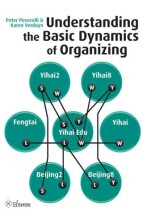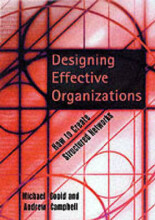Thornton: Institutional logics and institutional change in organizations: transformation in accounting, architecture and publishing
19 important questions on Thornton: Institutional logics and institutional change in organizations: transformation in accounting, architecture and publishing
The article of Thornton integrates two related areas of study: the theory and methods of analysis on 'institutional logics' and 'historical-event sequencing'. Explain this:
- Historical-event sequencing reveals the underlying patterns of cultural transformation.
> This dual perspective is applied to cases of institutional stability and change in accounting, architecture and higher-education publishing.
Missing from previous research is an understanding of how institutions motivate organizations to adapt one of these governance forms (markets, hierarchies, networks) over another. What does Thornton examines?
What are the overall findings of Thornton? They reveal how...
-Architecture by professional duality (cyclical model)
-Publishing by market rationalization (evolutionary model of institutional change in organizational governance)
- Higher grades + faster learning
- Never study anything twice
- 100% sure, 100% understanding
On which literature gap is addressed by Thronton, and how?
What does Thornton examines while combing the two aspects?
Previous research also misses an understanding of how institutional logics at the wider societal level motivate organizations to adopt one of the organizational governance (markets/hierarchies/networks) over another. What does Thornton explores?
Linking research on institutional logics and event sequencing provides an opportunity for Thornton. Which one?
How does Thornton define organizational governance?
What is institutional logics according to Thornton?
Thornton suggests that change occurs through at least three mechanisms. Which one? Explain them?
2. Structural overlap: when individual roles and organizational structures and functions that were previously distinct are force into association (f.e. mergers and acquisitions).
3. Historical-event sequencing: the occurrences that dislocate, rearticulate, and transform structures (f.e. shifts of resources).
> Inst. entrepreneurs and str. overlap provide the opportunity and means for recombination of cognitive schema and cultural models, which are then amplified by others in the sequencing of historical events.
Summarize Thorntons thoughts regarding institutional entrepreneurs, structural overlap and historical-event sequencing?
Which data sources are used bu Thornton?
What is the overall conclusion of Thornton regarding accounting? Formulate hypothesis 1.
H1: Industries with higher public policy implications and higher displacement of professional control by that of the corporation are more likely to lose professional and corporate jurisdiction to the state and are more likely to exhibit a punctuated equilibrium pattern of institutional change in organizational governance.
What is the overall conclusion of Thornton regarding architecture? Formulate hypothesis 2.
H2: Industries that actively co-opt public policy implications under professional control, with lower displacement of professional control by that of the corporation and the market, and with conflicting factions of the profession, are more likely to exhibit a cyclical pattern of institutional change in organizational governance.
What is the overall conclusion of Thornton regarding publishing? Formulate hypothesis 3.
H3: Industries with lower public policy implications, but with lower degrees of professionalization and higher displacement of professional control by that of thje market, are more likely to exhibit an evolutionary pattern of institutional change in organizational governance.
What is meant with the evolutionary model of Thornton regarding publishing?
Name a theoretical implication of the research of Thornton:
Formulate the core of what Thornton studied: (course slides)
The first three changes are explained earlier and shown in the images. What is meant with additive and substitutive change?
Third order: Substitutive transformation, without knowing what the end state will be.
The question on the page originate from the summary of the following study material:
- A unique study and practice tool
- Never study anything twice again
- Get the grades you hope for
- 100% sure, 100% understanding






























